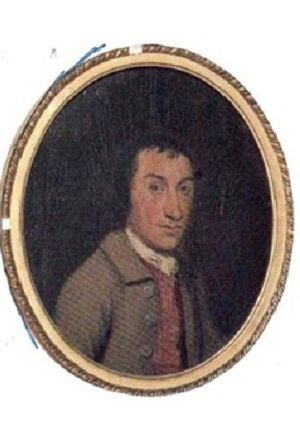Full name Edward Stevens c. 1756 to 1789 Chertsey Died September 7, 1819 Bowling style RM/RFM (underarm) Role Cricket Player | Batting style RHB Name Lumpy Stevens Nickname Lumpy | |
 | ||
Born 1735 Send, Surrey, England | ||
Edward "Lumpy" Stevens (1735 – 7 September 1819, Walton-on-Thames, Surrey) was an English professional cricketer who played first-class cricket from c. 1756 to 1789.
Contents

He was an outstanding bowler who is generally regarded as the first great bowler in the game's history. He was universally known by his nickname and was always called "Lumpy" in contemporary scorecards and reports.
Cricket career
Born 1735, Send, Surrey.
The beginning of Stevens' career was before scorecards began to be kept on a regular basis from the 1772 season. He may have come from a line of cricketers as two Surrey players called Stevens are mentioned in connection with the London v Slindon match in the 1744 season. Stevens probably began playing in great matches around the mid-1750s at a time when bowlers still bowled (i.e., trundled) the ball all along the ground, as in crown green bowls. It is not known if Stevens was the first to "give the ball air" but he was certainly around when that particular revolution occurred, probably before 1770. What is known is that Stevens was the bowler who made the most careful study of flight and worked out all the implications of variations in pace, length and direction mentioned above. He became a master of his craft.
Unlike the Hambledon players who tended to represent their club only, Stevens made appearances for just about every team, including Hambledon. He is normally associated with Surrey teams in general and with the famous Chertsey club in particular. He continued as a player until he was 50 and played his last match on 2–5 September 1789 for All-England v Hampshire at Sevenoaks Vine. It is not known what took place in his career following this game, but John Major suspected that Stevens enlisted in the British Army. On 20 May 1793 a letter signed by 'A Kentish Cricketer' written to Sporting Magazine describes an incident where an Ensign Hamilton, a member of the Sevenoaks Vine Club, had a cannonball deflected away from his head by a Sergeant. The magazine and the Maidstone Journal both linked the story to Stevens.
Style and technique
How he came by his legendary nickname is uncertain but it may have been because he was adept at choosing a pitch to suit his very subtle variations of pace, length and direction. In the 18th century, choice of pitch was granted to one team according to the rules in situ and it was generally the leading bowler on that team who chose the place where the wickets would be pitched. According to the famous verse:
Family and personal life
Stevens was a gardener by trade and his bowling prowess earned him a job on the Walton-on-Thames estate of the Earl of Tankerville, a noted patron of the game.
Legacy
It is known that in a single wicket match on 22–23 May 1775, Stevens beat the great Hambledon batsman John Small three times with the ball going through the two stump wicket of the day. As a result of his protests, the patrons agreed that a third stump should be added.
